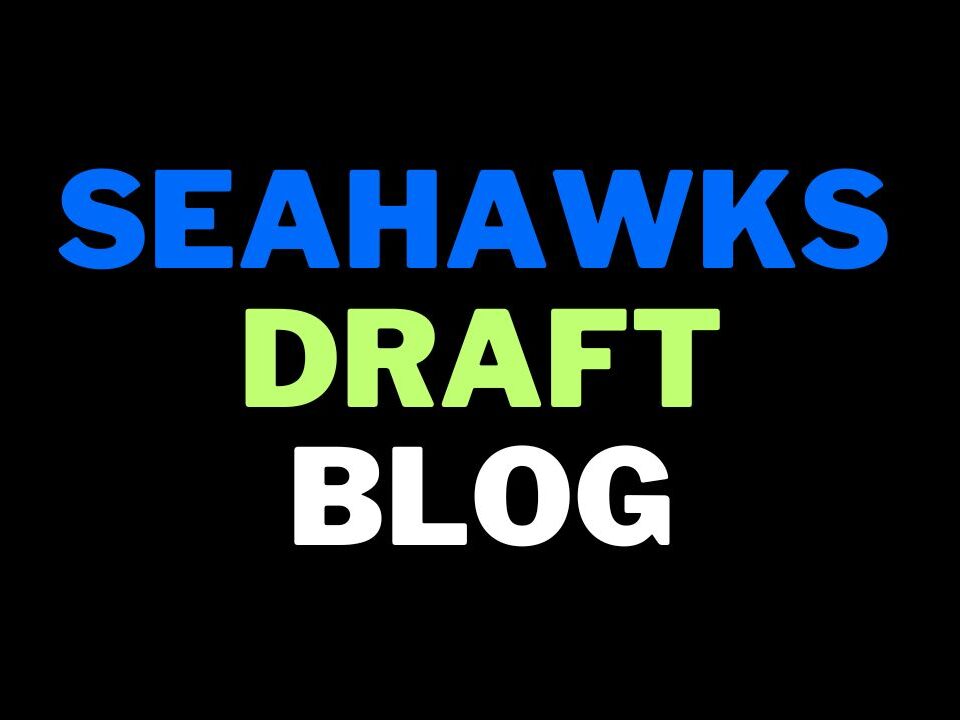This is a guest post by Curtis Allen
Every game is a discovery process for fans. Coaches, players and analysts can talk about what the team does well and what it needs to work on both in the short-term and long-term but the game on the field reveals what the team truly needs to work on.
In 2024, we have discovered several things about the Seahawks.
The run defense early on was atrocious. They made some personnel changes and with time and perseverance things fell into place, culminating in a dominant performance last week.
The offensive line has been a problem from Week One. The return of Abe Lucas and an adequate couple of games by Olu Oluwatimi have eased those concerns.
And so on.
I would argue this game may be a real pivot point for this Seahawks franchise. It may well provide valuable answers about what enhancements the team needs to make this coming off-season.
Why? What will we learn about the Seahawks from their game this week against the Jets?
A Brief Look at the Jets’ Last Eight Games
The Jets have tumbled badly from a team that had ‘this is our year’ aspirations to dismissing their Head Coach and General Manager mid-season. They’re currently on a 1-8 run. Even for an organization as dysfunctional as the Jets, this is bad.
How are offenses attacking the talented Jets defense? Have a look at this quick chart of those nine games:
Only one team ran out a game plan that disproportionately favored the pass and they paid a heavy price for it. The Jets dominated the Texans’ poor Offensive Line, sacking C.J. Stroud eight times and forcing twelve bad throws. Stroud ended the day 11-for-30 and abandoned the pocket to run for his life seven times as the Jets defeated Houston.
Indeed, New York’s pass defense is the best in the NFL with only eight passing touchdowns conceded in eleven games. They are second-best in the NFL in terms of passing yards conceded.
In this stretch, the winning teams rolled out a game plan that evenly split passes and throws. Even when they did not have tremendous success running the ball, they stayed committed to it and kept the Jets’ pass rush at bay – and helped force the game into Aaron Rodgers’ less than capable hands (more on that in a moment).
The point we can learn about the Seahawks in this game is both obvious and subtle: Can they run effectively enough to achieve an even balance of play calls – something we have consistently discussed all season?
And if not, can they design and execute passing plays that keep Geno Smith upright and clean enough to carry the offense with a minimum of mistakes?
A positive answer to either of those questions is essential to success in this match.
But it will require something we have not seen from this team yet this year. The Seahawks have not yet run a 50/50 split of passes and run plays and they have yet to reach the average of 31 run plays called that those seven teams did against the Jets. The passing offense – while occasionally dazzling – has been struggling to carry the burden.
Again, it is not necessarily about gaining yards on the ground as it is a mechanism to allow the passing game to operate functionally.
Have a look at the highlights of Indianapolis’ win against New York two weeks ago.
After a beautiful crosser to Josh Downs, we see Anthony Richardson run a Run-Pass Option three plays in a row with Jonathan Taylor. The first two, Taylor is given the ball and gains good yardage. The third, Richardson keeps it. The aggressive Jets defense has been primed to stop Taylor and the Colts run a clever play that has Kylen Granson run across the formation. The edge defender prepares for a block but Granson runs free and is wide open for an easy catch that Richardson just slightly overthrows.
The next series (about 1:25 in the video) you see them running it again. Richardson fakes to Taylor, Taylor releases and is wide open but the play action has opened the middle for a nice throw to Michael Pittman before the pass rush can get home. On the next play, Josh Downs slips behind the line and runs away from his defender on a cross for an easy catch and run pass. That completion that looks very much like what the Seahawks have run with Jaxon Smith-Njigba of late.
Downs nearly scores on the play. But on the next play, what do the Colts call? A misdirection run with Taylor leading the way where Richardson has the open field to use his size and speed to score.
These sequences keep repeating throughout the game. It is a successful strategy and they rarely deviate from it.
Yet it by no means makes the game very easy for the Colts. If you watch the whole highlights package, you will see Richardson needing to think on his feet and get away from the pass rush (sometimes unsuccessfully, as he was sacked twice).
Richardson’s final stat line is one we all would love to have: 20-for-30 for 272 yards, one touchdown pass and no interceptions. He was only pressured six times for an easily workable 18.8% rate. Richardson’s Intended Air Yards per Pass Attempt? 10.5 yards per attempt – a sign that despite a fierce pass rush, the Colts were able to throw much more than just short quick passes and dump offs.
Balancing the pass with the run, picking their spots and giving their quarterback open looks and taking advantage of his natural talents, they found a way to score points on this tough defense.
The Colts (and the other teams before them) have found a way to use the Jets’ aggressive defense against them.
So, the question is – will the Seahawks try to roll out the same kind of game plan we have seen of late? One where Geno Smith is required to sit in the pocket and make himself a target for pass rush hits and have constant pressure exerted on him. That paired with a relatively unimaginative run game could spell real trouble for the Seahawks today.
This week, Mike Macdonald offered statements of support that the running game is coming together. Will it coalesce into something more than a bland tool used in a half-hearted attempt to keep the defense honest? Or will Geno Smith once again be counted on to win them the game while under enormous pressure?
And if that is the case, will Ryan Grubb and Macdonald at least give Smith a package of plays that are effective quick passes? Or have him use his legs to move the pocket and give himself time?
Or will they roll out the same offense we have seen that is seemingly indifferent to the poor quality of the offensive line? One that is relying on near-constant Geno Smith magic to make it work?
We will see.
If there is one team the offense should just pin their ears back and commit to the running game, this is it. We have been talking about it for weeks. The coaching staff have all acknowledged it as a necessity.
But what we see today might point the way toward the future of this offense.
Defend Aaron Rodgers
Rodgers is 41 years old and coming off a major knee injury suffered last season. When you combine that with a battered and bruised Jets Offensive Line and you have a player who is not what he once was.
The Jets have taken all of this into account and have designed an offense that, for the most part, keeps Rodgers healthy and upright, while not relying too much on his diminishing mobility.
How? They have him getting rid of the ball more quickly, throwing shorter passes then he ever has in his career.
Three years ago we discussed this strategy put in place for Rodgers by then-coach Matt LaFluer:
“Rodgers’ field of targets has been slowly pulled back by LaFluer, so he quickly gets the ball out closer to the line of scrimmage. The Packers employ a generous amount of creativity getting the receivers open, so Rodgers avoids the pass rush by reading the defense, communicating with his receivers pre-snap and making a quick throw.
The defensive backs and linebackers must be ready to close quickly on receivers in the flat. If they can limit these plays to just a couple yards per attempt — and even occasionally make a tackle for loss — that reduces that option’s effectiveness and makes Rodgers look for his second and third reads.
When he does, the pass rushers must be ready to pounce and provide pressure.
If they can get pressure with their standard package, that will allow them to have one more defender patrolling that five-to-fifteen-yard pocket downfield and keep Rodgers from turning a potentially negative-yardage play into something spectacular.”
At the time I wrote those words, Rodgers was throwing at a career-low 7.7 Intended Air Yards per Pass Attempt.
In 2024? He has gone to a far lower number at 6.6 air yards per attempt.
It is not necessarily that he no longer has the arm to throw deeper. Just ask the Texans.
It is his age, his legs and his lack of protection that is driving this scheme.
The Seahawks did a terrific job containing Kyler Murray and James Conner in the running game last Sunday, forcing them out of their comfort zone and allowing the Seahawks to control the game.
They can do exactly the same thing by not allowing yards after the catch on these short throws and using their emerging Defensive Linemen against a battered Jets Offensive Line to put constant pressure on Rodgers.
If you watch the highlight reel above against the Colts, you will see what I am describing. Dump offs to Breece Hall, quick throws to Garrett Wilson and throwing at Davante Adams whenever he is not smothered in coverage are the bulk of his game now.
Getting pressure applied with a standard package, mixing in a timely blitz and keeping themselves between receivers and the end zone will provide a clear path to once again controlling the contest.


